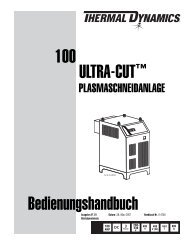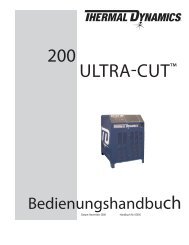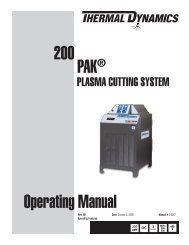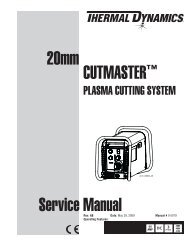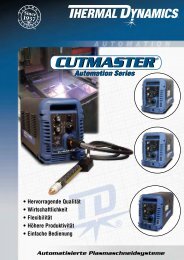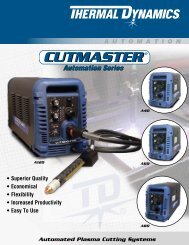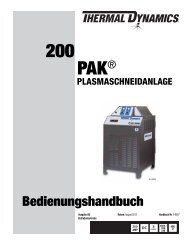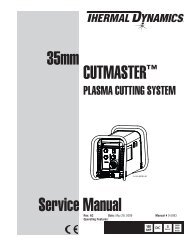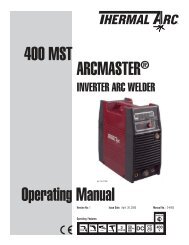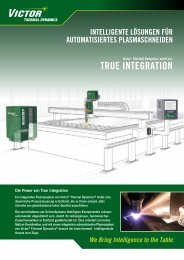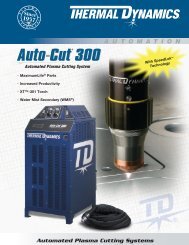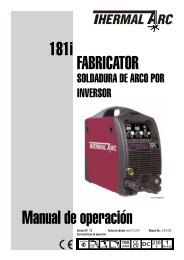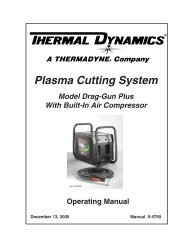211i Operating Manual FabricatOr® - Victor Technologies - Europe
211i Operating Manual FabricatOr® - Victor Technologies - Europe
211i Operating Manual FabricatOr® - Victor Technologies - Europe
You also want an ePaper? Increase the reach of your titles
YUMPU automatically turns print PDFs into web optimized ePapers that Google loves.
FABRICATOR <strong>211i</strong> BASIC WELDING<br />
Joint Preparations<br />
Art # A-07694<br />
Figure 4-18: Overhead Position, Fillet Weld<br />
In many cases, it will be possible to weld steel sections without any special preparation. For heavier sections<br />
and for repair work on castings, etc., it will be necessary to cut or grind an angle between the pieces being<br />
joined to ensure proper penetration of the weld metal and to produce sound joints.<br />
In general, surfaces being welded should be clean and free of rust, scale, dirt, grease, etc. Slag should be<br />
removed from oxy-cut surfaces. Typical joint designs are shown in Figure 4-19.<br />
Open Square Butt<br />
Joint<br />
Gap varies from<br />
1.6mm (1/16”) to 4.8mm (3/16”)<br />
depending on plate thickness<br />
Single Vee Butt Joint<br />
Lap Joint<br />
Fillet Joint<br />
Corner Weld<br />
Plug Weld<br />
Art # A-07695_AE<br />
Not less than<br />
45°<br />
Arc Welding Technique - A Word to Beginners<br />
Single Vee Butt Joint<br />
Double Vee Butt Joint<br />
Tee Joints<br />
(Fillet both sides of the<br />
joint)<br />
Edge Joint<br />
Plug Weld<br />
1.6mm (1/16”)<br />
1.6mm (1/16”)<br />
Figure 4-19: Typical Joint Designs for Arc Welding<br />
Not less than<br />
70°<br />
Not less than<br />
70°<br />
1.6mm (1/16” ) max<br />
1.6mm (1/16”) max<br />
For those who have not yet done any welding, the simplest way to commence is to run beads on a piece of<br />
scrap plate. Use mild steel plate about 6.0mm thick and a 3.2mm electrode. Clean any paint, loose scale or<br />
grease off the plate and set it firmly on the work bench so that welding can be carried out in the downhand<br />
position. Make sure that the work clamp is making good electrical contact with the work, either directly or<br />
through the work table. For light gauge material, always clamp the work lead directly to the job, otherwise a<br />
poor circuit will probably result.<br />
BASIC WELDING GUIDE 4-12 <strong>Manual</strong> 0-5225



